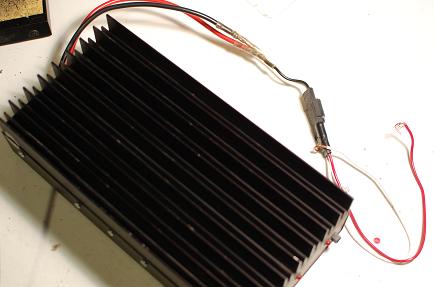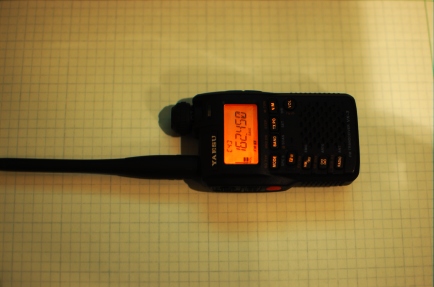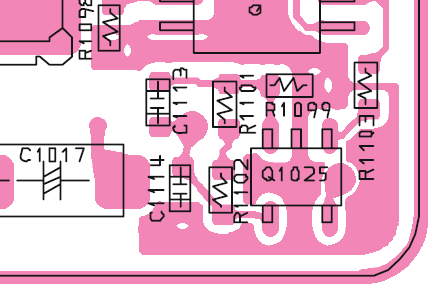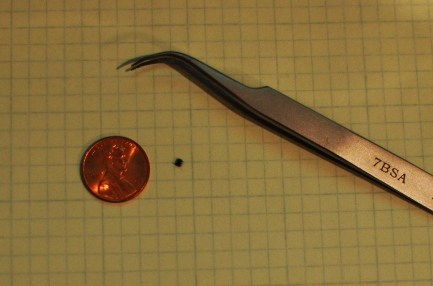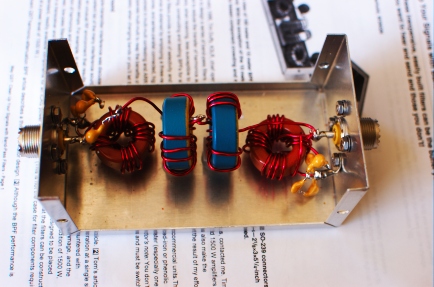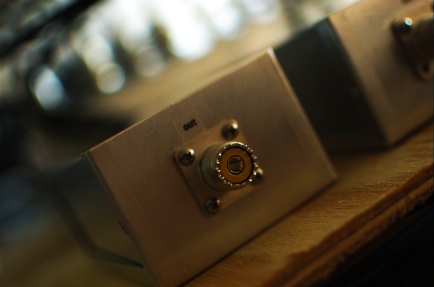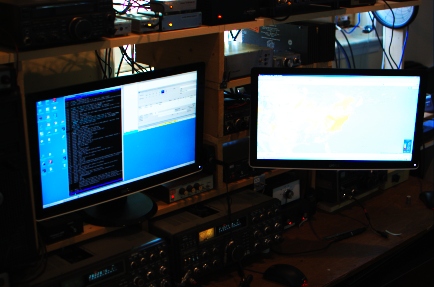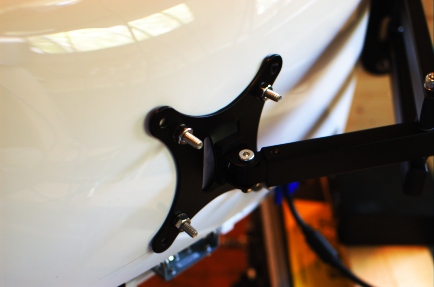I’ve picked up a couple of Mirage “brick” amplifiers over the past few years. I’ve also rewired the DC cable on each and every one. Here’s the latest. AWG 10 to AWG 16 transition? Seriously? I know it technically doesn’t matter too much for a short run, but these amplifiers suck down a lot of current and I just don’t see cutting corners on that. Maybe I’m a purist…
Archive for October, 2011
Amateur Wiring
October 13th, 2011A deaf VX-3R
October 12th, 2011I do not spend a lot of time on VHF/UHF FM and have not for many years. My first radio in 1993 was an Alinco DJ-580T handheld and I’ve thought at various times that a new handheld might suit me well, especially for receiving. A few weeks ago, as I tend to, I came across a Yaesu VX-3R offered “for parts or repair” on attractive terms and so acquired it—my second handheld ever. The problem seemed straightforward enough: full TX power, but no RX on amateur bands. RX on FM broadcast OK. The seller assured me, after I had agreed to purchase based on his description, that “somebody” had told him that this problem occurs when “only one component is bad.”
Based on the seller’s description of the problem and a thorough reading of the Technical Supplement, I developed a short list of candidate failure modes, components, and sources. Fortunately, all of the components could be sourced easily from the usual sources.
When the radio arrived, I gave it a functional check and it indeed exhibited the problem that the seller had advertised. I quickly popped it open and noticed a small red sticker in the lower right-hand (when facing the device like you would operate it) corner of the Main Unit (Side A, per the Technical Supplement’s notation). A neatly hand-drawn arrow pointed to component Q1025, which upon closer inspection, was clearly damaged.
So, I quickly set about identifying the component and procuring a replacement. It was a NJU7007F3 operational amplifier. Huh…it did not contribute to any of the failure modes I had initially suspected. However, a careful reading of the Technical Supplement indicated that this op amp drives varactor diodes in a tracking preselector—so, if it does not work, the radio will exhibit varying degrees of deafness in the amateur bands. I found out later that the “somebody” was actually a Yaesu technician who had seen the radio for repair at the behest of a previous owner and left the sticker for me. At any rate, this component clearly would have to be replaced if I were to fix the radio, so I set about looking for a source.
Mouser listed it in their catalog but wanted me to buy a reel of 3000. No thanks. At least they had it listed. So, I did the next most logical thing—I made a list of other parts that I needed and called Yaesu. The part was back-ordered to Japan for 4-6 weeks, but only cost 0.42 USD. I bought three.
After however many weeks it has been, a package from Yaesu showed up on my doorstep tonight. After repairing a damaged PCB trace (non trivial on something this small), I was able to replace it. The little black speck in the middle of this photograph is the removed component. For my non-US readers, the US 0.01 USD coin (“Penny”) is about 19 mm in diameter.
The radio fired right up and received NOAA/NWS right away. The entire repair once I had the parts was about 30 minutes. There are still two unbuilt SoftRock kits, an IC-290A with an unlocking PLL, and W1GHZ transverters for 903 and 1296 to be worked on…maybe tomorrow…
W3NQN filter wrap-up
October 9th, 2011After about six years of sporadic effort, I finally finished the W3NQN filter set by building the 10- and 15-meter filters over the past two weekends. Now I can operate SO2R with impunity on all bands. Several band combinations are still problematic, but those are problems that filters can’t solve.
Because the geometry of our home does not permit me to have a walk-behind station desk, I had to attach the filters to the mounting board by laying on my back with a right-angle drill. That sort of thing is always a bit exciting!
Eliminating CRTs
October 9th, 2011Ever since I replaced my primary station computer (a decision that may be reversed soon—details in a later post), I desired to replace the remaining 19-inch Dell Trinitron CRT monitor with something lighter and smaller. Mom and Dad were in town a few weeks ago on a much-needed vacation and we went to the National Air and Space Museum’s Udvar-Hazy facility near Dulles Airport. This is only a few miles from one of the best used computer shops in the DC area—CedarPC.
CedarPC is nice because they’ll sell you “damaged” stuff at a discount if you don’t care about the damage. I inquired about a 24-inch flat panel I had seen on the web site, but they could not find it. They did find me a nice 20-inch flat panel that was just missing the stand and the price was right. The missing stand was no big deal because I wanted to mount the monitor on an arm so I could bring it closer to the HF end of the station desk, tuck it in at the VHF end, or even swivel it out over the couch to watch a DVD. Sold.
Monitor arms are generally expensive…at least 2-3 times what I paid for the monitor itself, often more. So, I went to trusty eBay and found something designed for mounting televisions for $15 including shipping. This did require some modification of the monitor housing and liberal application of wide washers to reinforce the plastic in the housing. But, it was done with all junkbox screws and washers.
